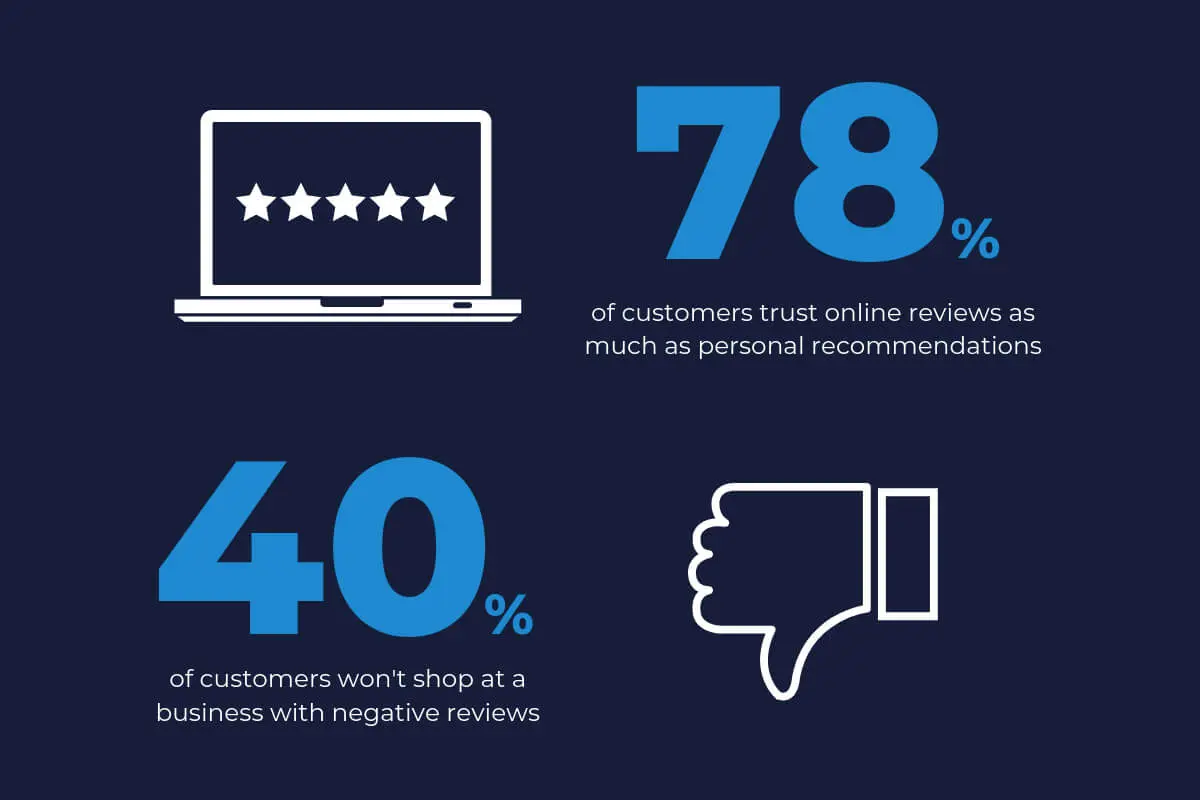From time to time, we hear uplifting stories about struggling businesses that make remarkable comebacks, offering immediate value. Yet, there are also tales where companies fail to recover, serving as cautionary examples.
Even a giant like Apple faced possible bankruptcy until Steve Jobs returned to steer the company back on course. Conversely, many brands lacking such visionary leadership didn’t fare as well, ultimately sinking.

That said, there are some lessons to learn here — avoid the mistakes made by others and follow the strategies of successful businesses. However, this does not mean you should copy every move it took to resuscitate a dying brand. The key to good branding and marketing is to separate yourself from others.
Here are some crucial tips to jumpstart your path toward making your company a well-oiled machine. Embrace these strategies, and you might just create a brand ready to make waves globally.
Want to receive updates? Sign up to our newsletter
Each time a new blog is posted, you’ll receive a notification, it’s really that simple.
How Do You Bring A Brand To Life?
1. Give Your Brand Personality
Think about Steve Jobs’s personal brand. He exemplified simplicity by donning an understated but classic outfit consisting of a turtleneck, jeans, and New Balance sneakers. In a way, the same simplified yet practical values were reflected by Apple.

However, you don’t necessarily have to dress the same way you portray a brand — God forbid the business is related to animal costumes. Instead, take some time out and imagine your brand’s image in the form of a persona — a person, an animal, or a thing. What qualities does it have?
Perhaps you see a polished businessperson complete with a suit, tie, and a briefcase — their only business objectives is to be a leadership role model. Or maybe, you see a motherly figure — an empathetic caregiver that only wants the best for her family of clients. Similarly, some brands may identify better with a wolf — a mascot of playfulness and intelligence devoted to family.
As an added tip, put together a list of these values and earnestly contemplate whether your target audience will be able to relate to them. This is an excellent trust-building tool, and a hard copy of the personality traits forms a concrete base that everyone can use as a reference point.
Overall, this persona helps define your brand and maintain focus in the long run. Anytime new ideas or suggestions pop up during a brainstorming session, consider whether they will support the brand’s identity.
2. Re-Invent Your Business
Building a successful company takes time, and high initial costs are common. Hitting success too quickly can lead to issues like insufficient inventory or staffing, which can ultimately harm sales.
At the same time, a successful entrepreneur should have the intuition to know when things are going downhill and explore innovative ways. As a rule of thumb, if you feel your passion is diminishing — this is possibly a sign to start over. In other words, you may have to re-create and re-invent each aspect to bring your brand to life.
While sometimes you may have to redefine your brand entirely, there are other ways to go about it, such as:
A. Logo Redesign
A dashing sports car or a sharp suit jacket — our eyes turn to look for the logo. Indeed, there is a reason why most well-known brands spend millions on creative logo designs.
After all, it gives customers the first impression and grabs their attention. Many buyers go for a product from a well-established brand just for its logo, which may serve as a status symbol.
B. Rename Your Brand
A brand name is more than just words on a page. Sometimes, a simple tweak can breathe new life into it. Though it doesn’t need to spell out your core values, a catchy name can generate buzz and capture interest from potential customers.
Consider how the iconic Monster energy drink was first known as Hansen’s Natural — does the former name reflect the caffeine-heavy and controversial nature of the beverage? And indeed, this profitable, world-known brand now raked in millions, leaving Hansen’s Natural far behind like a distant memory.
C. Different Packaging
In 2009, Tropicana decided that changing its packaging design would amplify its voice in the F&B space. Little did they know that the move would be met by a flood of disappointed comments from long-time customers and Twitter memes mocking the new design. Not to mention how the change incurred losses that ran into millions.
Packaging plays an important role; finding out what works for your brand will be a creative process. Before proceeding, you may want to take surveys and opinion polls to ask people to reveal how they feel and think about the new design.

D. Revise Pricing points
While you should never devalue your business — especially in its infancy, you may want to revise your pricing points to find out if that is where you are going wrong. Rather than completely slashing down prices in a desperate attempt, consider offering subscription plans, free samples with products, discounted bulk prices, and so on.
3. Know Your Customers
The digital space abounds with tools to help research trends around the world. That said, you may hire a digital marketing agency or use Google tools to figure out who is your target audience. This includes pertinent details, such as your target age group, how much they earn per month, where they live, their likes and dislikes, and so on.
Work towards fulfilling their demands and begin advertising on all online and offline platforms. If you have a business, you may want to print an ad in the local papers. At the same time, consider offering limited promotional deals, attending networking events, being active on Facebook, etc.
On the other hand, if your once-booming business is now in shambles, it is probably time to reconnect with how many people were once loyal patrons of the past. People who helped build your business will likely feel obliged to return if they feel valued. That said, ask their opinions on what went wrong and what you must do to deliver.
4. Know Your Competitors
You know the saying, “Keep your friends close, but your enemies closer.” By researching your competitor’s blunders and achievements, you can better plan your next moves.
At the same time, tracking another brand’s moves will ensure that you don’t ape the same strategies and end up appearing as a phoney.
Additionally, taking a leaf out of Apple’s playbook may come at a time when a competing company can pull you out of the weeds, just as Microsoft did for Apple. Nevertheless, be on the lookout for any partnership opportunities that bring real brand value.

5. Bring Your Brand Online
How often do we see our neighbourhood family businesses do not do as well as they used to? Usually passed down through generations, the marketing strategies of such companies may not keep up with the fast-evolving demands of the new generation.
Or perhaps, it has nothing to do with the quality of products but the brand’s inability to reach the right people in a highly competitive market. It is becoming increasingly important that businesses don’t depend on “old-school” advertising methods via print or television to get potential patrons to pay a visit.
Nowadays, digital marketing is all the rage — when done right, SEO helps bring your audience closer than you can imagine. You may want to invest in a digital marketing agency that provides services from SEO tools and keyword research to content marketing and social management.
Some may offer to build an official website to get you started. An attractive website design with detailed information about your business, including the office’s updated address, is a must. However, be aware of digital marketing agencies that resort to unethical means that may reign in traffic but do not convert the hits into a return on investment.
6. Social Media
When interacting with users through social media, remember that these are real people on the other end who want to feel connected to your brand. That said, the key to remaining in close contact with your consumers is consistency.
Not to mention how, in an instantly gratifying and fast-evolving digital economy, staying out of the limelight even for a day or two can cost you valuable traffic—so, having an emotional connection with your audience with a daily post or content on popular social media platforms, such as Twitter and Facebook.
Being able to work remotely is an important part of the power of social platforms. Taking the first step in this highly adaptable form of marketing, as a remote worker, you can express your brand’s message on the go — it’s convenient but effective.
What To Avoid
1. Lose Focus Branding
Get your thinking cap on and create new packaging, logos, names, and personas– but know when to stop. Your primary focus should be on the people — and we are not just talking about the customers. Create a good working environment for your employees, find ways to improve user experience, and see the difference.
2. Making Empty Promises
A reliable brand worthy of the consumer’s trust stays authentic and delivers what it promises. So, don’t try to make yourself look good by putting up pretences. Even a single negative review may create a domino effect through word-of-mouth, eventually ruining the brand’s reputation.

3. Spreading Your Brand Thin
And we do not mean how Heinz spread itself from being a ketchup to a mustard manufacturer. While traditional line extensions are acceptable, some companies tend to overextend themselves and lose their original lustre.
Consider how Yahoo went from a US $140 billion search engine to being sold for just US $5 billion in a decade after making a common mistake with its failed attempts at expansion.
Getting Your Brand Recognised
Don’t be afraid of simplifying your brand — after all, most reliable and profitable companies do it. That said, be clear on what the brand offers and ensure you can deliver what you promise.
It is easy to get pressured into swerving from what you initially set out to build, but providing great content in a market where you can buy everything sets you apart. Not to mention how building a company is like building Rome — it takes more than a day.
Building a strong company culture without any external influences to distract you, you can develop a niche and know it like the back of your hand. And that’s all you require to bring your brand to life and warm it up. However, it is up to you to keep the motor running.
Please contact us if you find yourself stuck on any of these steps or want to speak to a professional to start building your brand and online presence. The team at sitecentre® have years of unique experience helping small business make a significant impact. We are always happy to help!




